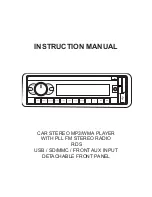
8-66
Cisco TelePresence System Administration Guide
OL-21845-01
Chapter 8 Troubleshooting the CTS 1300
Managing Log Files
Use the information in the following sections to initiate SIP requests and responses:
•
SIP Requests and Methods, page 8-66
•
SIP Response Categories, page 8-66
SIP Requests and Methods
Table 8-9
summarizes the SIP requests and methods supported by the Cisco TelePresence System
Administration software. The first column lists the RFC that describes the SIP request messages or
method.
SIP Response Categories
SIP replies to the requests in
Table 8-9
using the response categories described in
Table 8-10
.
Table 8-9
Supported SIP Requests and Methods
RFC
Request/Method
Description
3261
ACK
Confirms that the client has received a final response to an INVITE request.
3261
BYE
Terminates a call. Can be sent by either the caller or the called party.
3261
CANCEL
Cancels any pending searches but does not terminate any call currently in progress.
2976
INFO
Allows session-related control information generated during a session to be carried along
the SIP signaling path.
3261
INVITE
Indicates that a user or service is being invited to participate in a call session.
3265
NOTIFY
Immediately upon successful accepting or refreshing of a subscription, a NOTIFY message
is sent to communicate the current resource state to the subscriber. This NOTIFY message
is sent in the same dialog as that created by the SUBSCRIBE message.
3261
OPTIONS
Queries the capabilities of servers.
3262
PRACK
Provides reliability for 1xx type messages; see
Table 8-9
.
3515
REFER
Provides a mechanism allowing the party sending the REFER message to be notified of the
outcome of the referenced request.
3261
REGISTER
Registers the address listed in the To header field with a SIP server.
3265
SUBSCRIBE
Requests current state and state updates from a remote node.
3311
UPDATE
Allows a client to update parameters of a session, but has no impact on the state of a dialog.
This request can be sent before the initial INVITE has been completed, thereby making it
useful for updating session parameters within early dialogs.
Table 8-10
SIP Response Categories
Response
Category
Response Type
1xx
Informational messages
2xx
Successful responses
3xx
Redirection responses
4xx
Request failure responses
5xx
Server failure responses
6xx
General failure responses
















































